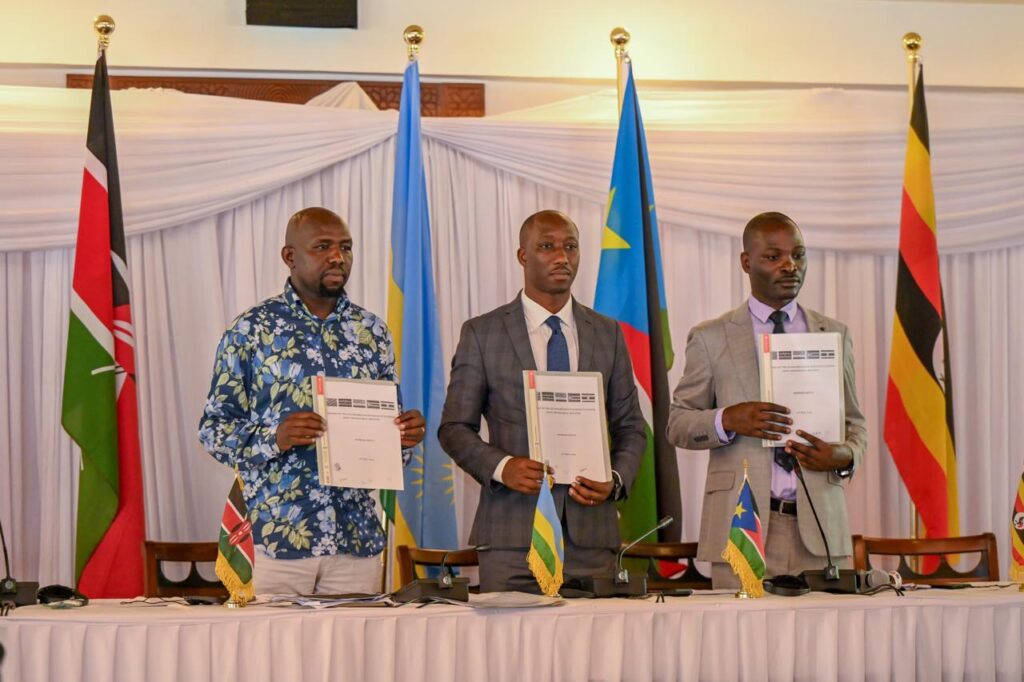 The transport ministers of Kenya, Uganda, Rwanda and Congo signed a joint letter to identify options and financial resources for the construction of EAC standard gauge railway (SRG) network connecting these countries as well as Sudan.
The transport ministers of Kenya, Uganda, Rwanda and Congo signed a joint letter to identify options and financial resources for the construction of EAC standard gauge railway (SRG) network connecting these countries as well as Sudan.
The official document says that the four countries will join efforts to build SGR sections from Naivasha in Kenya to Uganda, Rwanda, South Sudan, and the DRC.
“As a country, we seek to leverage private sector partnerships in the extension of our SGR line to ensure seamless cross-border movement of goods and Kenya is at an advanced stage of changing our legal and policy framework to allow private sector investment in the railway sector, recognising the limitation of public resources and the need to attract private capital,” said Onesimus Kipchumba Murkomen the Cabinet Secretary in the Ministry of Roads and Transport, Kenya.
The joint commitment is part of regional plan to extend standard gauge railway to Kampala Uganda and Kigali, Rwanda and also Juba, South Sudan, a project which has been on the table since 2013 when a SGR protocol was signed aiming at developing a connected infrastructure for seamless cross-border transport services.
The countries’ policies cover the rehabilitation and expansion of the railway network, “improving freight and passenger services, developing relevant skills for efficient management, and creating a framework for coordination and regulation in partnership with Northern Corridor States,” the Kenyan official said.
Kenya is committed to launch soon the construction works for the standard gauge railway from Naivasha to Kisumu and Malaba, estimated at USD 5.3 billion.
The ministers also aimed to develop a roadmap of EAC Standard Gauge Railway network to accelerate the project’s implementation. “We aim to create special economic zones along the corridor that will transform areas with stop stations into economic hubs,” Kenyan Transport Secretary said. In addition, the ministers further agreed to harmonise planning and development of inland water transport infrastructure in order to provide seamless multimodal transport services and speed up the review of the Tripartite Agreement on water transport on Lake Victoria.
Share on:



